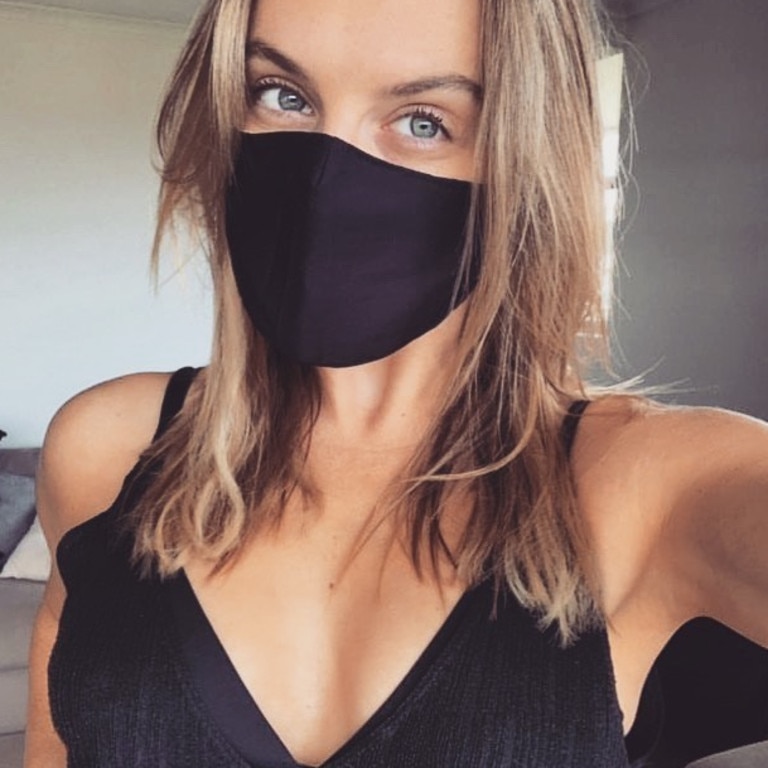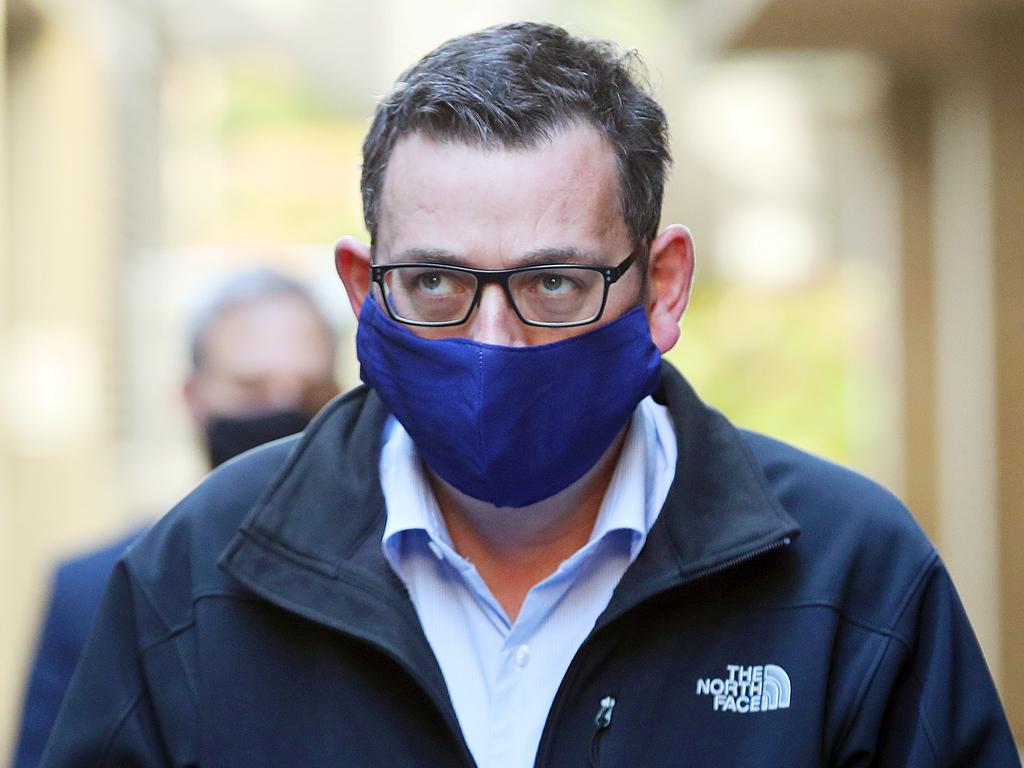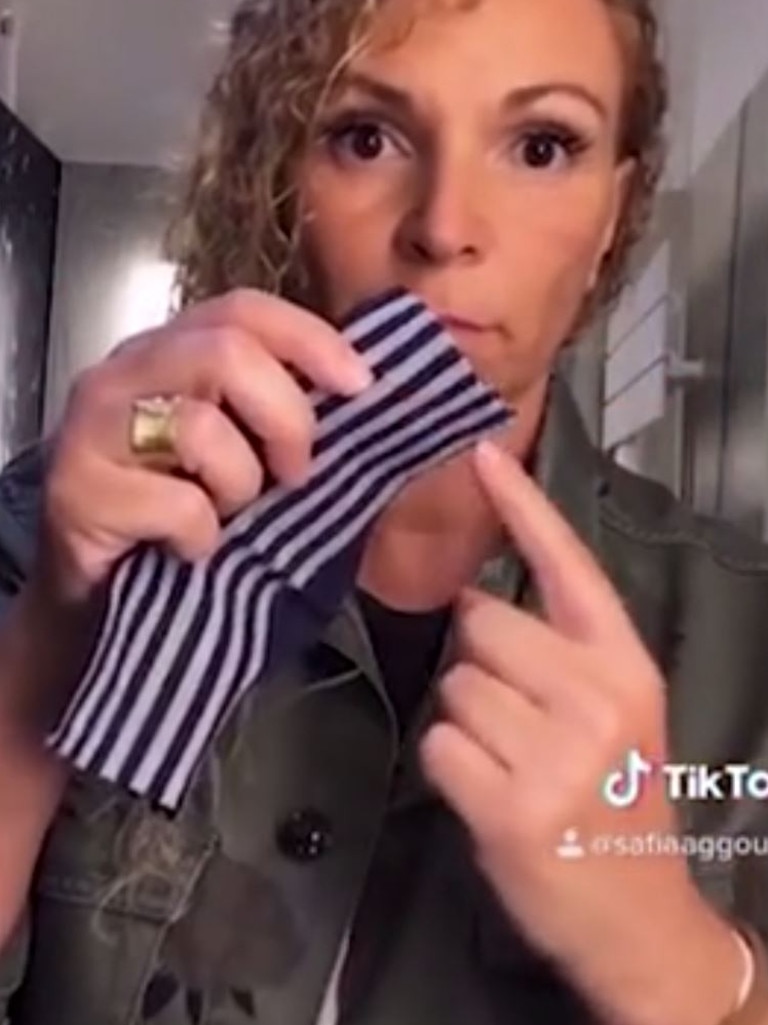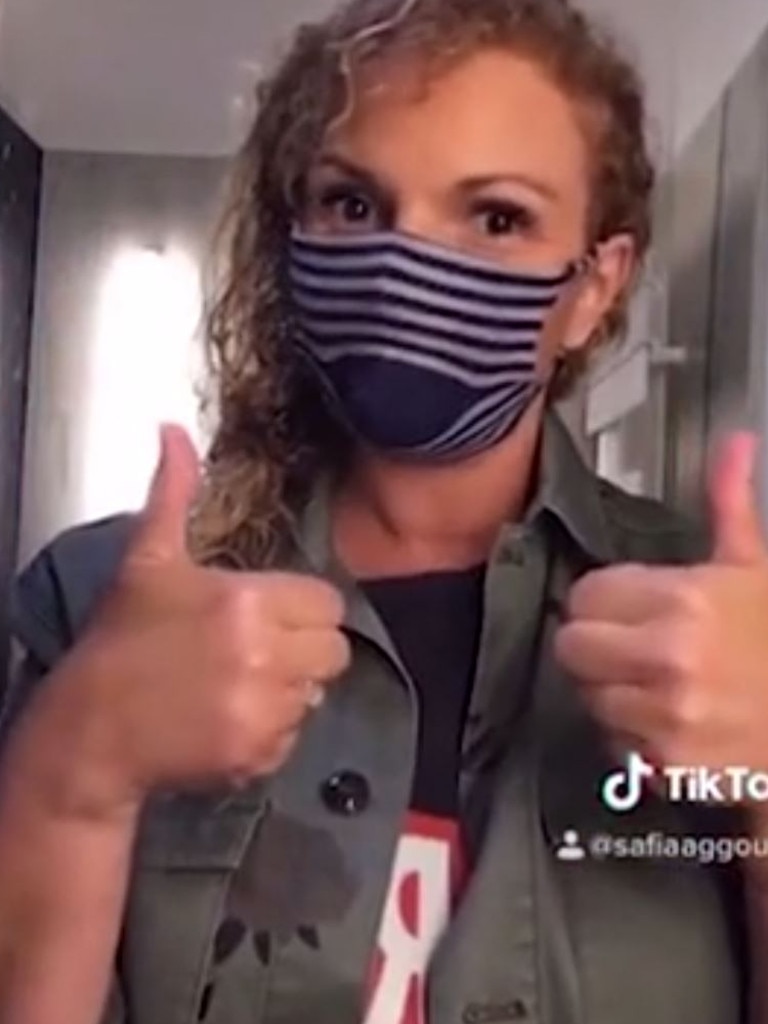Face masks Melbourne: What you need to know
As Melbourne prepares for its mandatory mask rule, a woman’s simple trick to make a homemade mask from almost nothing has gone viral.
People in Victoria’s coronavirus hot spots will have to wear face masks whenever they step outside from Thursday.
But that does not mean they have to rush out and buy hundreds of disposable masks, or find a medical-grade covering.
Premier Daniel Andrews told residents that from 11.59pm on Wednesday anyone leaving their home for one of the four permitted reasons during the Melbourne lockdown would be required to cover their face to prevent the spread of coronavirus – or cop a $200 fine.
Mr Andrews urged Victorians today to “embrace things like masks”, saying they’re part of the state’s “new normal, at least for the next four-and-a-bit weeks”.
On Sunday, Mr Andrews clarified “it need not be a hospital-grade mask, it can be one of the handmade masks like I was wearing when I came in today. It can be a scarf, it can be a homemade mask”.
Experts have advised that cloth masks need a minimum of 2-3 layers to be most effective. And the official advice listed on the The Department of Health and Human Services (DHSS) in Victoria website also states “a scarf or bandana does not offer the same amount of protection as well-fitted face masks”.
So what is the difference between a face mask and a face covering – and is one more effective than the other?
RELATED: Where to buy reusable masks

FACE MASKS VERSUS FACE COVERINGS
Put simply, a face mask is the term for medical grade facial protection and anything else is classed as a facial covering. But in between you have cloth masks, which are more effective than a scarf or bandana but not classed as a medical grade mask.
Face masks are used by healthcare workers and people fighting COVID-19 on the frontline and are to prevent contamination to the face and filter out 95 per cent of airborne particles. They are single-use only meaning they have to be disposed of after wearing.
Face coverings are made out of any non-medical-grade material, such as T-shirts and sweaters, and when worn properly can help reduce the risk of you transferring germs and viruses to others. They can also be washed and re-used.
RELATED: Follow the latest coronavirus updates

WHAT ARE THE BEST CLOTH MASKS?
Early on in the pandemic, experts had argued medical grade masks were the most effective at preventing the virus spread – but this has recently changed.
Two independent studies provided evidence last week that universal facial coverings are an effective tool.
“Cloth face coverings are one of the most powerful weapons we have to slow and stop the spread of the virus — particularly when used universally within a community setting,” Dr Robert Redfield, the director of the Centers for Disease Control and Prevention said.
Australia had previously said face masks weren’t necessary, but official advice has since changed following Melbourne’s mask mandate which has seen The Federal Government throw its support behind masks. Currently they are not compulsory for all Australians.

ARE SOME FACIAL COVERINGS BETTER THAN OTHERS?
Despite growing evidence any face covering is better than no face covering, epidemiologist Dr Abrar Ahmad Chughtai from the University of New South Wales said there were notable details to look for that improve its effectiveness.
“Use two or three layers of fabric. Choose fabric with a high thread count – so a tighter weave, for instance, from a good quality sheet is generally better than a fabric (mask) with a looser weave that you can clearly see light through,” he wrote in a blog post Monday.
“Fabrics made with more than one type of thread, for instance cotton – silk, cotton – chiffon, or cotton – flannel, may be good choices because they provide better filtration and are more comfortable to wear.”
CAN I MAKE MY OWN MASK?
Yes, you absolutely can. The Department of Health and Human Services (DHSS) in Victoria has shared a video from The Social Studio that lists how you can make your own. It shows you will need three layers of fabric to make the most effective cloth mask and will need to ensure it fits correctly.


Here’s what you need to make a DIY mask:
ELASTIC MATERIAL: If you don’t have elastic bands, some household elastic items that you can use include rubber bands and hair ties. If you don’t have these on hand, you can also use string or shoelaces.
COTTON FABRIC: The best is tightly woven cotton, these include T-shirt fabric, or high thread-count fabric from pillowcases or sheets.
SEWING MATERIALS: These include scissors, needle and thread or a sewing machine
CAN’T SEW? HERE’S A HANDY HACK
A video that shows how you can use a sock to create a face covering has gone viral as it’s so easy to do – but again, for it to be most effective you will need multiple layers of fabric and to ensure it fits correctly.
COMMON MASK MISTAKES
The DHSS has warned not to insert holes or valves into your masks as this can result in breathing out the virus if you have COVID-19.
Washing and/or sanitising hands before putting the mask on or taking it off is also something that needs to be done to ensure wearing it is fully effective.
When you take it on and off, don’t touch the front of the mask or your face. Carefully remove your mask by grasping the ear loops or untying the ties. For masks with a pair of ties, unfasten the bottom one first, then the top one.
Another big no, no is removing your mask to talk to people – even at the safe social distance of 1.5m. This essentially renders the act of wearing it ineffective.
WHEN SHOULD I WASH MY MASK?
A cloth mask should be washed each day after use. Re-using a cloth mask without washing is risky because it can become contaminated or may not be as effective in protecting you, DHHS states.
WEARING FACE MASKS AT WORK
The advice around whose responsibility it is to provide a mask for work, the employer or the employee, is still a little unclear, most likely as the official announcement was only made yesterday and details haven’t been laid out yet.
Prior to Daniel Andrews mandatory mask rule, The Safe Work Australia website stated that if an employer decided they wanted workers to wear face masks, they must provide them.
“You must also provide appropriate training and instruction on how to put on, wear, remove and dispose of the mask,” it reads.
“Fit testing is very important to ensure that the mask is effective. Information about using a mask is provided by the manufacturer.
“If a worker has been provided training and instruction about using a mask, they must comply with that training and those instructions.”
DO CHILDREN NEED TO WEAR A FACE MASK?
Official advice on this is that children and people aged under 18 years do not need to wear a mask – but it is up to individual families to make their own decisions regarding this with their children. It’s important to note that children under two years should never wear a face mask due to choking and strangulation risks, DHHS states.

WHERE CAN I BUY A MASK?
Following Premier Daniel Andrews announcement of mandatory masks at the weekend, panicked residents flocked to stores potentially creating a dangerous environment.
If you don’t want to make a mask, you can purchase them from a number of different outlets, including these 11 places news.com.au has collated.
Many high street stores such as Chemist Warehouse, Bunnings and Spotlight are also selling them but be cautious of standing in line to purchase as this can breach social distancing measures.
Continue the conversation @RebekahScanlan | rebekah.scanlan@news.com.au




